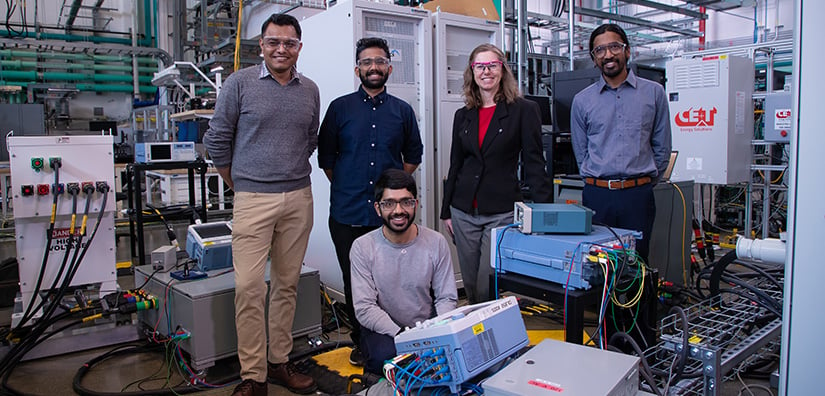Energy-to-Grid Integration
Energy-to-grid integration is the study of how modern grid technologies can support the integration of energy resources into systems that are reliable, resilient, and secure.

Energy-to-grid integration includes developing new standards and codes for the interconnection of new energy resources and designing strategies to enhances energy resilience without investments in major infrastructure upgrades to the current system.
NLR researchers are using the unique capabilities in the Energy Systems Integration Facility (ESIF) to solve complex computational and data analysis problems related to examining the impact of energy technologies on transmission and distribution power systems.
The ESIF Advantage
Advanced Distribution Management System Test Bed
Consisting of software simulation and hardware elements to recreate a power distribution system, the advanced distribution management system (ADMS) test bed can simulate just about any modern grid scenario to demonstrate how systems and controls will perform in a realistic environment. NLR's ADMS test bed can help utility companies and vendors meet customer expectations of reliability, power quality, energy use, data security, and resilience to natural disasters and other threats. Learn more about NLR's ADMS test bed.
Microgrid Evaluation Platform
The ESIF houses NLR's megawatt-scale microgrid evaluation platform, which allows utilities to connect their microgrids and run a variety of simulations. Microgrids can connect and disconnect from the grid and operate in grid-connected or island mode, which can result in improved customer reliability, cost reduction, and resilience to grid disturbances. Learn more about NLR's microgrids.
Residential Battery Experimentation Platform
NLR's residential battery experimentation platform provides stakeholders with a better understanding of how batteries work for any use (backup, self-consumption, arbitrage), from any vendor, and in any climate. It helps connect the dots among consumer battery performance, life-cycle economic value, and customer interests; and with remote access capabilities and an automated function, users can easily control experiments online and off-site with this research platform. The residential battery experimentation platform replicates every aspect of a residential battery system in the ESIF—from utility rate designs to state of charge for consumer battery systems.
Learn more about how NLR is improving the nation's electric grid infrastructure to make it more flexible, reliable, resilient, secure, and secure.
Contact
Share
Last Updated Dec. 30, 2025
